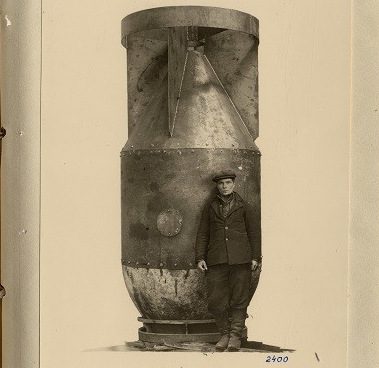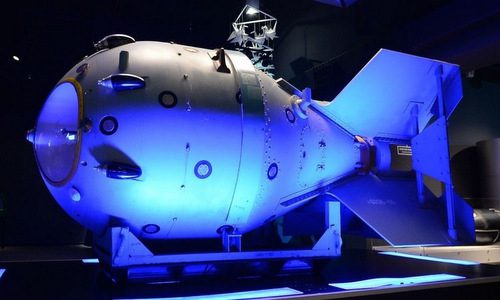The first nuclear bomb of the Soviet Union was developed in secrecy, with all related information encrypted, according to newly declassified documents.
The Russian nuclear energy corporation (Rosatom) has released dozens of pages of documents regarding the development of the Soviet Union’s first nuclear bomb, including previously unpublished images of the bomb during its development.
As early as World War II, the United States, the United Kingdom, and the Soviet Union began a race to develop atomic weapons. By the end of 1941, the U.S. government heavily invested in its nuclear bomb program to gain an advantage over its opponents. The result of this project was two bombs dropped on the cities of Hiroshima and Nagasaki in Japan in August 1945, marking the first and only time nuclear weapons were used in warfare.
The test of the RDS-1 bomb on August 29, 1949. (Video: Radiation Hazard/Youtube).
The two atomic bombs from the U.S. shocked Soviet leader Joseph Stalin. At that time, the Soviet government considered the development of nuclear weapons a top priority for national security and accelerated its secret project to regain the balance of power with the U.S.
The decree to develop the Soviet Union’s first nuclear bomb was approved in June 1946. Scientists not only had to race against time but also had to work in an environment of absolute secrecy.
Among the documents released by Rosatom, there are three typewritten pages sent to the director of Bureau No. 11, Pavel Zernov, requesting him to develop the “jet engine C (RDS) with versions using heavy fuel (C-1) and light fuel (C-2)” under the supervision of Laboratory No. 2 of the Soviet Academy of Sciences.
This document seems unrelated to the nuclear weapons program. However, “jet engine C” was actually the code name for the first nuclear bomb, later officially designated as RDS-1 “Pervaya Molniya” (First Lightning).
“Heavy fuel C-1” refers to high-enriched plutonium nuclear material, while “light fuel C-2” refers to enriched uranium.

Model of the RDS-1 bomb during its development. (Photo: Rosatom).
Scientists involved in the project had to report their progress to the Soviet government monthly. Their names were kept confidential in the documents and were only mentioned by their first initials. All letters were manually added to ensure secrecy.
The enormous investment resources, along with valuable intelligence from spies in the U.S., helped the Soviet Union accelerate the development of the nuclear bomb.
On August 29, 1949, the Soviet Union successfully tested the RDS-1 bomb at the Semipalatinsk test site in Kazakhstan, becoming the second country in the world to possess nuclear weapons. The RDS-1 had an explosive power equivalent to 22,000 tons of TNT, stronger than both bombs dropped by the U.S. on Japan.
On September 1, a WB-29 reconnaissance aircraft of the U.S. Air Force detected radioactive dust in the atmosphere while flying from Japan to Alaska. Data from this flight was compared with information obtained in subsequent missions, helping the U.S. confirm that the Soviet Union had successfully tested an atomic bomb.
The secrecy surrounding the RDS-1 project was successful, as U.S. intelligence was completely surprised. The U.S. government and military previously believed that the Soviet Union lacked the capability to successfully develop such a weapon.

Complete model of the RDS-1 bomb displayed in Moscow. (Photo: Sputnik).
According to American scholar J.W. Smith, Washington at the time did not regard Moscow as a real threat when the Soviet Union’s total gross domestic product was only $65 billion compared to $250 billion for the U.S. Pentagon strategists even believed that Moscow had no capability to retaliate and would be destroyed if conflict broke out.
“American strategists believed they would enjoy nuclear monopoly at least until after 1954,” scholar Smith stated.
The test broke the U.S. monopoly on nuclear weapons and significantly changed the post-World War II balance of power. Washington was forced to “welcome” the Soviet Union as an equal power while considering the interests of that nation and its allies in all strategies.





















































